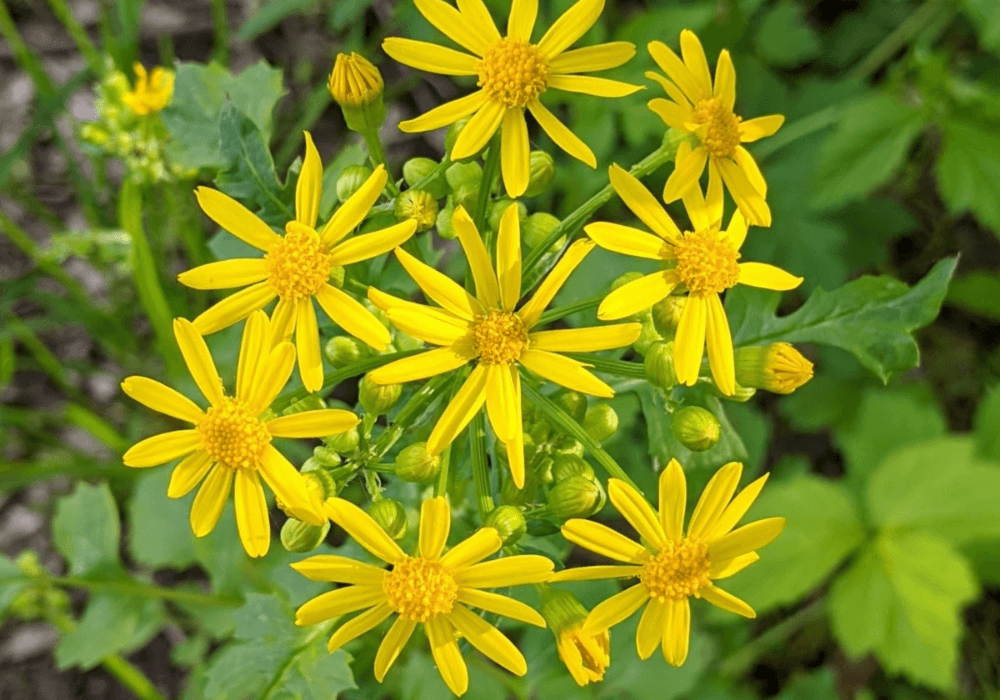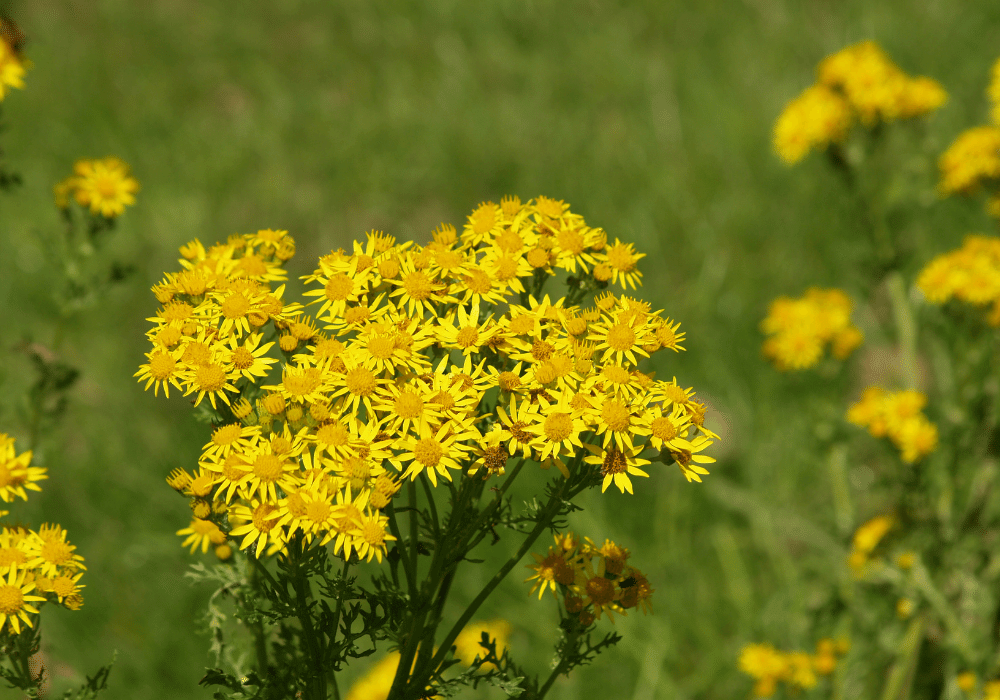Ragwort poisoning is serious and ultimately fatal in horses and ponies. Horse owners and yard managers should aim to prevent horses from eating any ragwort. This guide outlines how to identify ragwort and remove it safely and effectively.
Why is Ragwort so Dangerous to Horses?
Ragwort contains toxins that cause liver damage. The effects of ragwort poisoning build up over time, ultimately leading to irreversible damage and potentially death. Even small amounts of ragwort consumed over a period of several years can be fatal.
Some people believe that “a little bit won’t hurt” or “my horse won’t eat the ragwort because it has plenty of grass”. However, it is vital that you do not allow your horse to consume any ragwort for several reasons:
- You cannot be sure that your horse has not been exposed to ragwort in the past. Can you be certain that they didn’t eat any ragwort before you purchased them? The toxic effects of ragwort poisoning build up over time, so allowing your horse to eat ragwort now would be adding to anything they have consumed in the past.
- You cannot assume that your horse will choose to not eat ragwort, or that they won’t accidentally eat ragwort
- Younger plants are small and aren’t as bitter as mature ones. However, they are still toxic. Just because you can’t see the distinctive yellow flowers doesn’t mean the ragwort isn’t a risk to your horse.
- Ragwort loses its taste when it dies, but it is still just as toxic. Ragwort is often consumed by horses when it is in hay or haylage, or when it dies in the field.
Horse owners, yard owners and landowners also have certain legal obligations surrounding the management of harmful weeds. For example, allowing horses or ponies to graze on land where you know ragwort is present is a welfare concern and you can be prosecuted if you allow animals to suffer by eating harmful weeds. You can find out more on the government website.
Identifying Ragwort
Ragwort is characterised by its flat-topped clusters of yellow, daisy-like flowers that bloom between June and November. The plant can grow to a height of 3ft (90cm), with dark green leaves that can be up to 35cm long. The leaves form a distinctive rosette at the base of the plant - these rosettes are visible even when the plant is very young, long before it flowers.
Ragwort is usually biennial, meaning it lives for two years and flowers in its second year. So, don’t just rely on the yellow flowers to identify the plant. Young ragwort plants are still toxic, and they can be easier to remove and control at this stage. Furthermore, ragwort remains toxic even after it dies, so it is important to remove any dead plants as well as live ones.

How to Get Rid of Ragwort
Ragwort must be removed carefully and disposed of properly. Ragwort can be harmful to humans, so it is wise to wear gloves and protect your arms and legs when handling it. You may also want to wear a face mask if you are handling Ragwort that has flowered, because the pollen can also be harmful if inhaled.
If you decide to remove ragwort by pulling it up, you should aim to remove the entire plant, including the roots. This is easiest to do when the plant is a seedling or rosette, and soft ground will also help. You can also purchase specialist ragwort forks, which are designed to help remove the roots.
It is possible to spray the affected area providing you remove the ragwort once it has died. Remember to seek advice on how to use weedkillers safely – you may need to use a specialist contractor. The area must also be rested for a period of time after treatment. Remember to remove all of the ragwort after it has been treated because it is just as toxic once it has died as when it was alive.
Disposing of Ragwort Safely
Ragwort must be disposed of properly, and Defra has advice on how to do this. Generally, the most effective way to dispose of ragwort is by burning it. However, you should always take precautions around fire safety and consider alternative options if the weather has been especially dry or if there is not a safe area to burn the ragwort.
Avonvale Equine | Emergency Equine Vet
Ragwort poisoning can result in fatal liver failure - see our guide to the symptoms of ragwort poisoning for more information. If you suspect your horse is suffering from ragwort poisoning, you must call an emergency equine vet immediately. We are an independent equine vet practice offering 24/7 emergency callouts throughout our coverage area. Night or day, you will always see an Avonvale Equine vet, even in an emergency. Register your horse, pony, donkey or mule with us today.









